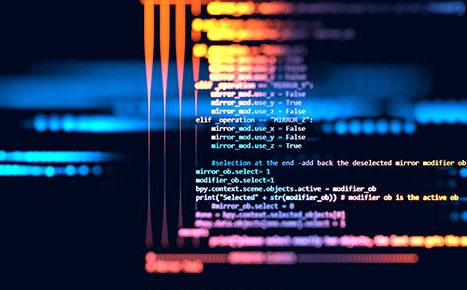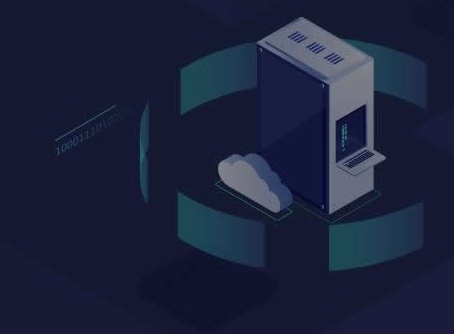基于OpenCV灰度图像转GCode的斜向扫描实现
- 创业
- 2025-08-04 14:54:03

基于OpenCV灰度图像转GCode的斜向扫描实现基于OpenCV灰度图像转GCode的斜向扫描实现 引言激光雕刻简介OpenCV简介实现步骤 1.导入必要的库2. 读取灰度图像3. 图像预处理4. 生成GCode5. 保存生成的GCode6. 灰度图像斜向扫描代码示例 总结
系列文章
⭐深入理解G0和G1指令:C++中的实现与激光雕刻应用⭐基于二值化图像转GCode的单向扫描实现⭐基于二值化图像转GCode的双向扫描实现⭐基于二值化图像转GCode的斜向扫描实现⭐基于二值化图像转GCode的螺旋扫描实现⭐基于OpenCV灰度图像转GCode的单向扫描实现⭐基于OpenCV灰度图像转GCode的双向扫描实现⭐基于OpenCV灰度图像转GCode的斜向扫描实现⭐基于OpenCV灰度图像转GCode的螺旋扫描实现⭐**系列文章GitHub仓库地址**
基于OpenCV灰度图像转GCode的斜向扫描实现双向斜向扫描
引言
激光雕刻技术作为一种创新的制造方法,近年来在艺术、制作和教育领域崭露头角。本文将介绍如何使用OpenCV库实现灰度图像到GCode的斜向扫描,为激光雕刻提供更灵活、更精细的图案生成方法。同时,我们将分享关键的代码片段,帮助读者理解并应用这一技术。
激光雕刻简介激光雕刻是一种通过激光束切割或去除材料表面的工艺,通常用于制作艺术品、装饰品和原型。通过控制激光束的运动路径,可以在各种材料上创造出精细而复杂的图案。在这篇博客中,我们将使用OpenCV实现一种激光雕刻的图案生成方法,具体来说是灰度图像到GCode的斜向扫描。
OpenCV简介OpenCV是一个开源的计算机视觉库,广泛应用于图像处理、机器学习和计算机视觉领域。其强大的功能和易用性使得它成为实现图像处理任务的理想选择。在本文中,我们将使用OpenCV来处理灰度图像,并将其转换为GCode。
实现步骤 1.导入必要的库首先,我们需要导入必要的库,包括OpenCV和一些用于图像处理的辅助库。以下是关键的CMake代码片段:
# 指向 OpenCV cmake 目录 list(APPEND CMAKE_PREFIX_PATH "~/opencv/build/x64/vc16/lib") find_package(OpenCV REQUIRED) include_directories(${OpenCV_INCLUDE_DIRS}) link_libraries(${OpenCV_LIBS})把上述内容添加到 cmake 中,此时我们已经可以在 C++ 中使用 OpenCV 库
2. 读取灰度图像使用OpenCV读取一张灰度图像,我们将其用于后续的处理。以下是代码片段:
cv::Mat mat = cv::imread(R"(~/ImageToGCode/image/tigger.jpg)", cv::IMREAD_GRAYSCALE);确保替换 ~/ImageToGCode/image/tigger.jpg 为你自己的图像文件路径。
3. 图像预处理在进行激光雕刻之前,我们需要对图像进行一些预处理,以确保得到清晰而准确的结果。这可能包括图像平滑、二值化、边缘检测等步骤,具体取决于你的图像和需求。以下是一个简单的翻转和二值化处理的代码片段:
cv::flip(mat, mat, 0); cv::threshold(mat,mat,128,255,cv::ThresholdTypes::THRESH_BINARY); 4. 生成GCode有了预处理后的图像,我们可以开始生成GCode了。GCode是一种机器语言,用于控制激光雕刻、数控机床和3D打印机等设备。以下是斜向扫描生成GCode的代码片段:
cv::Mat image; cv::resize(mat, image, cv::Size(static_cast<int>(width * resolution), static_cast<int>(height * resolution))); for(int k /*diagonal*/ = 0; k < image.rows + image.cols - 1 /*cond = height + width - 1*/; ++k) { if((k & 1) == 0) { // even for(int i = std::min(k, image.rows - 1); i >= 0; --i) { int j = k - i; if(i < image.rows && j < image.cols) { internal(image, j, i); } } } else { // odd for(int j = std::min(k, image.cols - 1); j >= 0; --j) { int i = k - j; if(i < image.rows && j < image.cols) { internal(image, j, i); } } } }这个函数将生成一个包含GCode指令的列表,你可以将其保存到文件中,用于控制激光雕刻机器。
5. 保存生成的GCode最后,我们将生成的GCode保存到文件中:
std::fstream file; file.open(fileName, std::ios_base::out | std::ios_base::trunc); if(!file.is_open()) { return; } for(auto &&v: command | std::views::transform([](auto item) { return item += "\n"; })) { file.write(v.c_str(), v.length()); } return;确保替换 ‘fileName’ 为你自己想要保存的文件路径。
6. 灰度图像斜向扫描代码示例 #pragma once #include <opencv2/opencv.hpp> #include <fstream> #include <print> #include <vector> #include <optional> #include <ranges> struct G0 { std::optional<float> x, y; std::optional<int> s; std::string toString() { std::string command = "G0"; if(x.has_value()) { command += std::format(" X{:.3f}", x.value()); } if(y.has_value()) { command += std::format(" Y{:.3f}", y.value()); } if(s.has_value()) { command += std::format(" S{:d}", s.value()); } return command; } explicit operator std::string() const { std::string command = "G0"; if(x.has_value()) { command += std::format(" X{:.3f}", x.value()); } if(y.has_value()) { command += std::format(" Y{:.3f}", y.value()); } if(s.has_value()) { command += std::format(" S{:d}", s.value()); } return command; } }; struct G1 { std::optional<float> x, y; std::optional<int> s; std::string toString() { std::string command = "G1"; if(x.has_value()) { command += std::format(" X{:.3f}", x.value()); } if(y.has_value()) { command += std::format(" Y{:.3f}", y.value()); } if(s.has_value()) { command += std::format(" S{:d}", s.value()); } return command; } explicit operator std::string() const { std::string command = "G1"; if(x.has_value()) { command += std::format(" X{:.3f}", x.value()); } if(y.has_value()) { command += std::format(" Y{:.3f}", y.value()); } if(s.has_value()) { command += std::format(" S{:d}", s.value()); } return command; } }; class ImageToGCode { public: // 激光模式 enum class LaserMode { Cutting, // 切割 M3 Constant Power Engraving, // 雕刻 M4 Dynamic Power }; // 扫描方式 enum class ScanMode { Unidirection, // 单向 Bidirection, // 双向 Diagonal, // 斜向 Spiral, // 螺旋 Block, // 分块 根据像素的灰度级别进行扫描,例如255像素分8个级别,那么0-32就是一个级别,32-64就是另外一个级别,以此类推。 // (Block scanning is performed based on the gray level of the pixels. For example, 255 pixels are divided into 8 levels, then 0-32 is one level, 32-64 is another level, and so on.) }; struct kEnumToStringLaserMode { constexpr std::string_view operator[](const LaserMode mode) const noexcept { switch(mode) { case LaserMode::Cutting: return "M3"; case LaserMode::Engraving: return "M4"; } return {}; } constexpr LaserMode operator[](const std::string_view mode) const noexcept { if(mode.compare("M3")) { return LaserMode::Cutting; } if(mode.compare("M4")) { return LaserMode::Engraving; } return {}; } }; ImageToGCode() = default; ~ImageToGCode() = default; auto &setInputImage(const cv::Mat &mat) { this->mat = mat; return *this; } auto &setOutputTragetSize(double width, double height, double resolution = 10.0 /* lin/mm */) { this->width = width; this->height = height; this->resolution = resolution; return *this; } auto &builder() { command.clear(); try { matToGCode(); } catch(cv::Exception &e) { std::println("cv Exception {}", e.what()); } std::vector<std::string> header; header.emplace_back("G17G21G90G54"); // XY平面;单位毫米;绝对坐标模式;选择G54坐标系(XY plane; unit mm; absolute coordinate mode; select G54 coordinate system) header.emplace_back(std::format("F{:d}", 30000)); // 移动速度 毫米/每分钟(Moving speed mm/min) header.emplace_back(std::format("G0 X{:.3f} Y{:.3f}", 0.f, 0.f)); // 设置工作起点及偏移(Set the starting point and offset of the work) header.emplace_back(std::format("{} S0", kEnumToStringLaserMode()[laserMode])); // 激光模式(laser mode) if(airPump.has_value()) { header.emplace_back(std::format("M16 S{:d}", 300)); // 打开气泵(Turn on the air pump) } std::vector<std::string> footer; footer.emplace_back("M5"); if(airPump.has_value()) { footer.emplace_back("M9"); // 关闭气泵,保持 S300 功率(Turn off air pump and maintain S300 power) } command.insert_range(command.begin(), header); command.append_range(footer); return *this; } bool exportGCode(const std::string &fileName) { std::fstream file; file.open(fileName, std::ios_base::out | std::ios_base::trunc); if(!file.is_open()) { return false; } for(auto &&v: command | std::views::transform([](auto item) { return item += "\n"; })) { file.write(v.c_str(), v.length()); } return true; } auto setLaserMode(LaserMode mode) { laserMode = mode; return *this; } auto setScanMode(ScanMode mode) { scanMode = mode; return *this; } private: void matToGCode() { assert(mat.channels() == 1); assert(std::isgreaterequal(resolution, 1e-5f)); assert(!((width * resolution < 1.0) || (height * resolution < 1.0))); // different conversion strategy functions are called here diagonalStrategy(); } void internal(cv::Mat &image, auto x /*width*/, auto y /*height*/) { auto pixel = image.at<cv::uint8_t>(y, x); if(pixel == 255) { command.emplace_back(G0(x / resolution, y / resolution, std::nullopt)); } else { auto power = static_cast<int>((1.0 - static_cast<double>(pixel) / 255.0) * 1000.0); command.emplace_back(G1(x / resolution, y / resolution, power)); } } // 双向斜向扫描 // Bidirectional oblique scanning void diagonalStrategy() { cv::Mat image; cv::resize(mat, image, cv::Size(static_cast<int>(width * resolution), static_cast<int>(height * resolution))); for(int k /*diagonal*/ = 0; k < image.rows + image.cols - 1 /*cond = height + width - 1*/; ++k) { if((k & 1) == 0) { // even for(int i = std::min(k, image.rows - 1); i >= 0; --i) { int j = k - i; if(i < image.rows && j < image.cols) { internal(image, j, i); } } } else { // odd for(int j = std::min(k, image.cols - 1); j >= 0; --j) { int i = k - j; if(i < image.rows && j < image.cols) { internal(image, j, i); } } } } } // // Define additional strategy functions here private: cv::Mat mat; // 灰度图像 double width {0}; // 工作范围 x 轴 double height {0}; // 工作范围 y 轴 double resolution {0}; // 精度 lin/mm ScanMode scanMode {ScanMode::Bidirection}; // 默认双向 LaserMode laserMode {LaserMode::Engraving}; // 默认雕刻模式 std::optional<int> airPump; // 自定义指令 气泵 用于吹走加工产生的灰尘 范围 [0,1000] // add more custom cmd std::vector<std::string> command; // G 代码 }; int main() { cv::Mat mat = cv::imread(R"(~\ImageToGCode\image\tigger.jpg)", cv::IMREAD_GRAYSCALE); cv::flip(mat, mat, 0); cv::threshold(mat,mat,128,255,cv::ThresholdTypes::THRESH_BINARY); ImageToGCode handle; // 50x50 mm 1.0 line/mm handle.setInputImage(mat).setOutputTragetSize(50,50,2).builder().exportGCode(R"(~\ImageToGCode\output\001.nc)"); } 总结通过使用OpenCV库,我们成功实现了从灰度图像到GCode的斜向扫描方法。这为激光雕刻提供了一种更加灵活、精细的图案生成方式。通过理解和应用上述代码片段,你可以根据自己的需求进一步调整和优化,实现更复杂的图案生成。激光雕刻的应用不仅仅局限于艺术品制作,还可以在教育和创客领域发挥巨大的创造力。希望这篇博客能够为你在激光雕刻领域的探索提供一些有用的指导。
基于OpenCV灰度图像转GCode的斜向扫描实现由讯客互联创业栏目发布,感谢您对讯客互联的认可,以及对我们原创作品以及文章的青睐,非常欢迎各位朋友分享到个人网站或者朋友圈,但转载请说明文章出处“基于OpenCV灰度图像转GCode的斜向扫描实现”




















